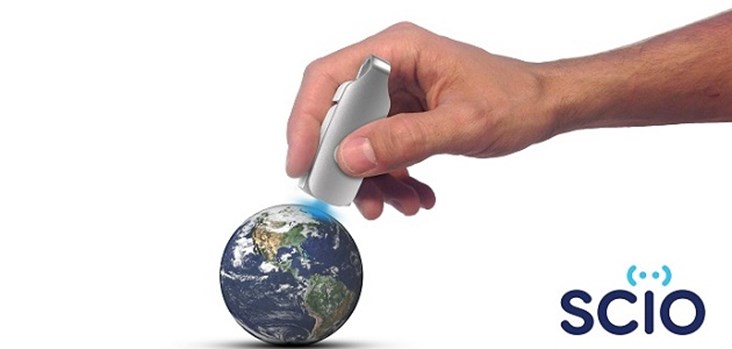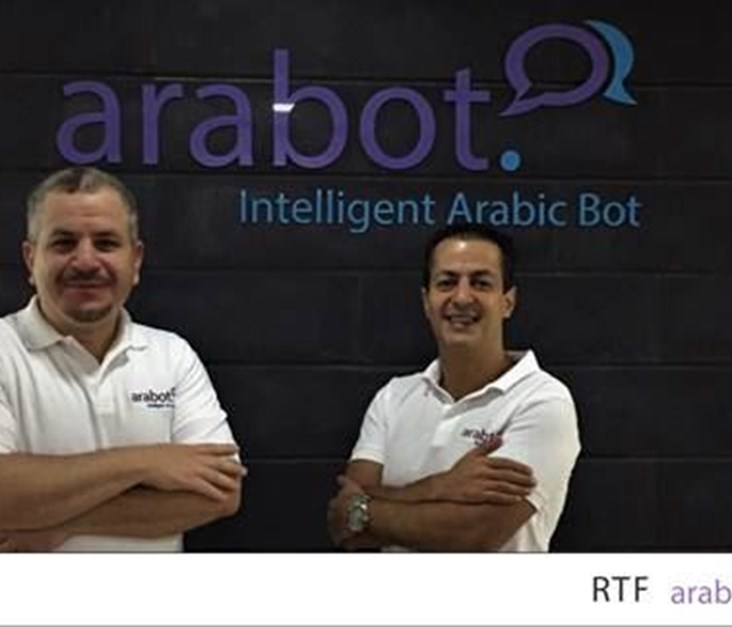Bits'n Pieces: Meet SCiO, the World's First Pocketable Molecular Sensor
Back
Following the Oculus Rift, the SCiO, a promised “pocket molecular sensor for all”, looks set to become the latest darling of the crowd backed hardware scene. Its Kickstarter campaign has already amassed five times its $200K goal with 39 days to go. SCiO comes from a company called Consumer Physics. During an interview with the BBC, it’s cofounder, Dror Sharon, expressed his hope that the device can be the Google for the physical world.
SCiO promises to be the world's first cheap, accessible molecular spectrometer. Spectrometers are used to measure properties of light over a specific portion of the electromagnetic spectrum, typically used in spectroscopic analysis to identify materials. Spectroscopy is the study of the interaction between matter and radiated energy. In much simpler terms, this process allows users to get instant relevant information about the chemical make up of just about anything around you.
How does it work?
The physical basis for this material analysis method is that each type of molecule vibrates in its own unique way, and these vibrations interact with light to create a unique optical signature.
 The SCiO is based on near IR spectroscopy and sends information to your smartphone. It includes a light source that illuminates the sample and an optical sensor, the spectrometer, that collects the light reflected from the sample. The spectrometer breaks down the light to its spectrum, which includes all the information required to detect the result of this interaction between the illuminated light and the molecules in the sample.
The SCiO is based on near IR spectroscopy and sends information to your smartphone. It includes a light source that illuminates the sample and an optical sensor, the spectrometer, that collects the light reflected from the sample. The spectrometer breaks down the light to its spectrum, which includes all the information required to detect the result of this interaction between the illuminated light and the molecules in the sample.
Normally, spectrometers used for near IR spectroscopy are found in scientific laboratories and are very big and expensive. But Consumer Physics managed to design and mass produce them at low cost. A Unit should go for $199. This was possible using low-cost optics and advanced signal processing algorithms.
The information is delivered to your smartphone via Bluetooth, and is in turn forwarded to a cloud-based service for review. Advanced algorithms utilize an updatable database to analyze the spectrum within milliseconds and deliver information about the analyzed sample back to the user’s smartphone in real time.
Real world applications
The whole device fits in the palm of your hand. The process is non-intrusive and doesn’t even require you to touch any objects - you can find out how ripe an Avocado is through the peel. Objects that can be analyzed include food, plants, medication, oil and fuels, plastics and wood. What’s more, SCiO learns about the world as well. The development team has enabled it to tell how much fat is in a salad dressing, how much sugar is in a particular piece of fruit, and how pure an oil is for instance.

You can teach an old SCiO new tricks
Out of the box, the device is able to analyze food, plants, and medications, but developers can teach SCiO tricks of their own. They can use it to monitor levels of alcohol, inspect your ingredients, classify plastics for recycling, and so on.
For more info on the device, the platform, and compatibility, be sure to check out its Kickstarter page.
.jpg)
Latest Business
Intelligence Report













